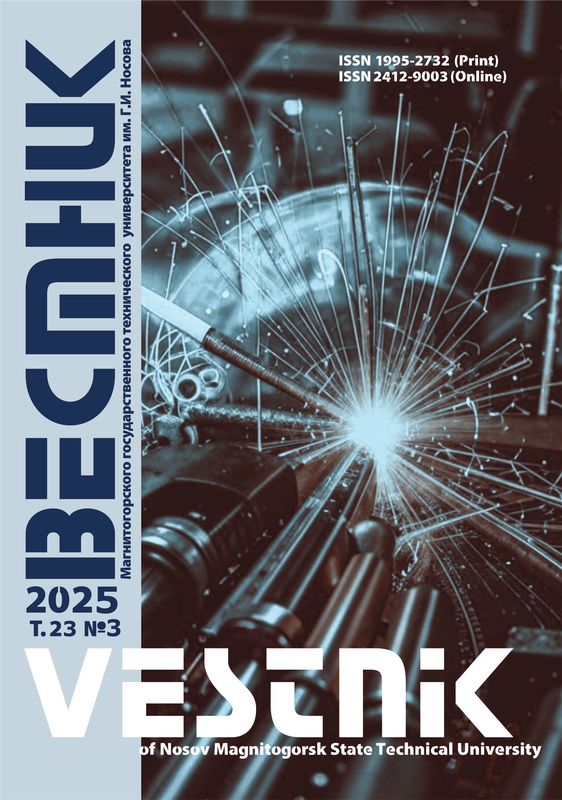Abstract
This article presents studies of the effect of heterogeneous structural components on a stress and strain state in processes of forming metals and alloys. A review of modeling techniques including their strengths and weaknesses is made. The article presents an analysis of the microstructure of wire rod and determines a type of non-metallic inclusions for finite element modeling in a software package. A finite element method was used to model prestressing of bimetallic copper-clad steel rods and drawing of high-tensile reinforcement bars manufactured from steel grade 80R.
Keywords
Inhomogeneity of the structure, microstructure, nonmetallic inclusions, finite element method.
1. Bichler C., Pippan R. Direct observation of the residual plastic deformation caused by a single tensile overload. Proc. 2nd Symp. on Fatigue Crack Closure, Measurement and Analysis, ASTM STP. 1999.
2. Christ H.-J., Mughrabi H. Cyclic stress–strain response and microstructure under variable amplitude loading. Fatigue and Fracture of Engineering Materials and Structures. 1996, no 19, p. 335.
3. Hertzberg R.W. Deformation and fracture mechanics of engineering materials. New York: Wiley, 1996.
4. Murakami Y. The stress intensity factors handbook. New York: Pergamon Press, 1987.
5. Tada H., Paris P.C., Irwin, G.R. The stress analysis handbook. 3rd edition. New York: ASME Press, 2000.
6. Baryshnikov M.P., Chukin M.V., Boyko A.B. Analysis of software packages used to calculate a stress and strain state of composite materials in forming processes. Vestnik Magnitogorskogo gosudarstvennogo tekhnicheskogo universiteta im. G.I. Nosova. [Vestnik of Nosov Magnitogorsk State Technical University]. 2012, no. 4, pp. 72–74.
7. Chernyavsky A.O. The finite element method. Fundamentals of practical application [Electronic resource]. FSBEI HPE SUSU (NRU). URL: http://pent.sopro.susu.ac.ru/LRN/0711/smm/files/fea_4c.pdf.
8. Düber O., Künkler B., Krupp, U., Christ, H.-J., Fritzen, C.-P. Experimental characterization and two-dimensional simulation of short-crack propagation in an austenitic-ferritic duplex steel. International Journal of Fatigue, 2006, no. 28, p. 983.
9. Baryshnikov M.P., Chukin M.V., Gun G.S., Boyko A.B. Modeling of the process of drawing steel wire taking into account heterogeneity of the structure in the SIMULIA ABAQUS complex software. Plastic deformation of metals. Dnepropetrovsk, 2014, pp. 156–158.
10. Stolarz J. Influence of microstructure on low-cycle fatigue in some single-phase and biphasic stainless steels. Proc. Intl. Conf. on Low Cycle Fatigue, P.D. Portella, H. Sehitoglu, K. Hatanaka Eds. Berlin, 2004.
11. Blochwitz C., Tirschler W. In-Situ scanning electron microscope observations of the deformation behaviour of short cracks. Materials Science and Engineering. 2000, p. 273.
12. Nakajima K., Terao K., Miyata T. The effect of microstructure on fatigue crack propagation of α+β titanium alloys. Materials Science and Engineering. 1998, p. 176.
13. Richter R., Tirschler W., Blochwitz C. In-situ scanning electron microscopy of fatigue crack behaviour in ductile materials. Materials Science and Engineering. 2001, p. 237.
14. Wiliams D.B. Carter C.B. Transmission Electron Microscopy: A Textbook for Materials Science. New York: Plenum Press, 1996.












